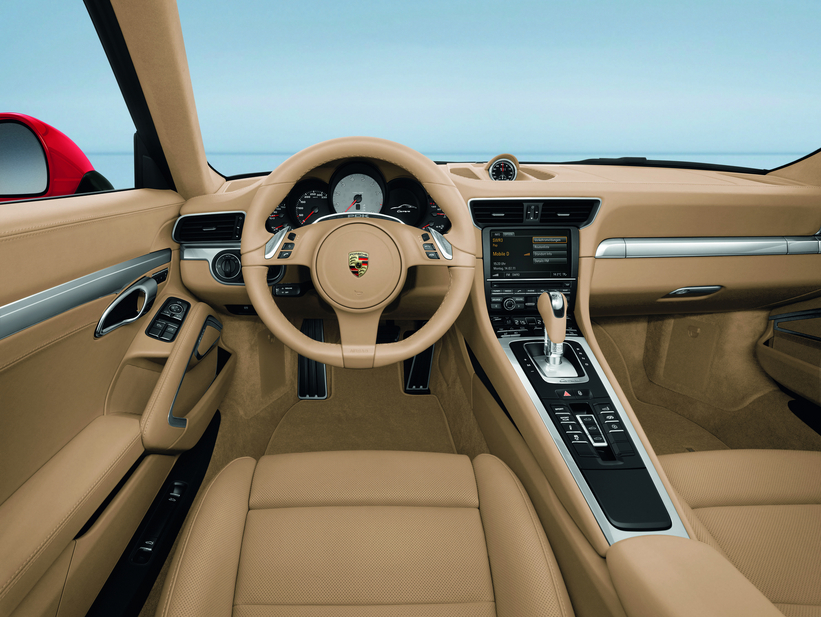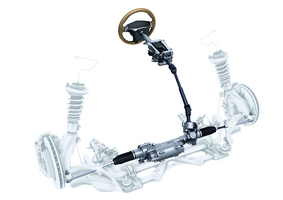|
Send this page to a friend! Fill in the form bellow | ||
news
The Opinion: Steering Feel - Are We Right To Get So Worked Up About It?
The issues surrounding ‘steering feel’ have become more of a talking point recently, with Porsche and BMW moving to electric power steering on their newest models. Porsche, in particular, has come in for a modicum of criticism regarding the steering, as has BMW. So, what do we mean by ‘steering feel’ and are we correct to lament its departure? I have heard various arguments regarding the subject over the last decade, so I thought I would jot a few of them down.
Sitting in the garage at home there is a mk1 Elise. It has been there for the last nine years and it was the car that introduced me to steering feel. The steering is hydraulically power assisted and the wheel rim is reasonably thick for its size, but not especially padded. It is also fitted with rack and pinion steering, this being the design that sports car manufacturers prefer. This was combined with a suspension set up that has won plaudits ever since, so it is not difficult to see why I am using it as an example.
I also drive a Mazda MX-5 pretty regularly, which was purchased last year. MX-5’s are again famed for being ‘driver’s cars’ and this one disappointed initially. So, what was the problem? It was wearing a set of cheaply made ‘ditch finders’, as they were christened by the garage that changed them. The important lesson to learn from all of this is that steering feel comes from the tyres, through the steering rack and the steering wheel and into the hands. If one of these falls short the experience will fall short also. This may seem obvious, and I apologize for that, but it is worth re-iterating.
When fitted with a good set of tyres, a well put together steering rack and a steering wheel that is not overly padded it is perfectly possible to ‘feel’ the road through the steering wheel. This is useful as it allows the driver to judge the road conditions, in turn allowing the driver to adjust speed appropriately for the conditions. At slower speeds it also means that there is more of a ‘connection’ with the road, which can inspire confidence, or add to the enjoyment that the average driver gets from his pride and joy on a weekend blast.
I remember reading one of Chris Harris’s blogs, a number of years ago, and he was unconvinced about the presence of steering feel in most of the cars we drive. BMW’s in particular are famed for the feedback they give, but I think Chris was onto something.
M Sport steering wheels are so thick and padded that they dilute any real feel, and this goes for M3’s too. What the driver thinks is steering feel is in fact a grainy feel from the hydraulic power steering system, not the road beneath them. The next technique employed by manufacturers, correctly I might add, is to add weight to the steering. This again can be mistaken for genuine ‘feel’. Weight is important, of course, but that can be engineered into electrically assisted power steering too.
I, for one, am not going to spend too long worrying about the absence of hydraulically assisted power steering. Electrically assisted power steering is more efficient than a hydraulically assisted system, and I find it more pleasant around town and while maneuvering. As long as the steering is accurate and weighted appropriately it will not pose a problem in most cars, and the Lotus Elise’s of this world will hopefully retain hydraulic power steering.
Whichever argument you agree with, electric power steering is here to stay. It is more efficient and works well at normal commuting speeds. That said, knowing Porsche, and its ability to refine a concept, I am not counting out the possibility of steering feel returning to the 911.
Encyclopedia | Engine Flat 6 Displacement 210 cu in Top Speed 180 mph Transmission 7, Manual Maximum power 355 hp @ 7400 rpm Type Fixed-head coupé Fuel Petrol Fuel consumption (combined) 26.13 US MPG | price $ 82.100 annual ownership cost $ 3.371 |
1 comment
more
Contribute
more about Porsche



latest news











